SLLSF87A May 2021 – November 2021 THVD1406 , THVD1426
PRODUCTION DATA
- 1 Features
- 2 Applications
- 3 Description
- 4 Revision History
- 5 Pin Configuration and Functions
-
6 Specifications
- 6.1 Absolute Maximum Ratings
- 6.2 ESD Ratings
- 6.3 ESD Ratings - IEC Specifications
- 6.4 Recommended Operating Conditions
- 6.5 Thermal Information
- 6.6 Power Dissipation Characteristics
- 6.7 Electrical Characteristics
- 6.8 Switching Characteristics (THVD1406)
- 6.9 Switching Characteristics (THVD1426)
- 6.10 Typical Characteristics
- 7 Parameter Measurement Information
- 8 Detailed Description
- 9 Application Information Disclaimer
- 10Power Supply Recommendations
- 11Layout
- 12Device and Documentation Support
- 13Mechanical, Packaging, and Orderable Information
Package Options
Mechanical Data (Package|Pins)
Thermal pad, mechanical data (Package|Pins)
Orderable Information
6.10 Typical Characteristics
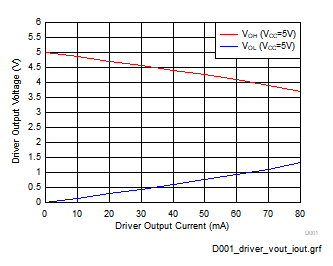
| DE = VCC | TA = 25°C |
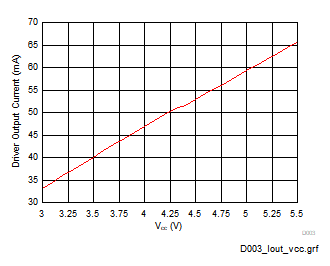
| RL = 54 Ω | DE = VCC | D = VCC |
| TA = 25°C |
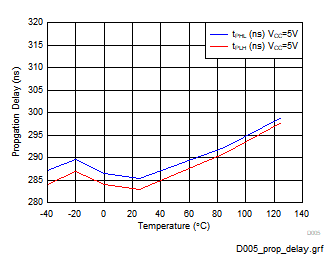
| RL = 54 Ω | CL = 50 pF |
| RL = 54 Ω | CL = 50 pF |
| RL = 54 Ω | TA = 25°C |
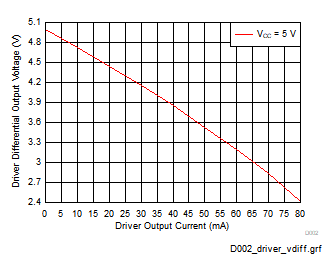
| D = 0 V | DE = VCC | TA = 25°C |
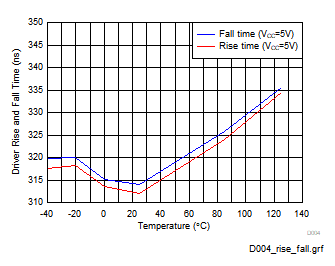
| RL = 54 Ω | CL = 50 pF |
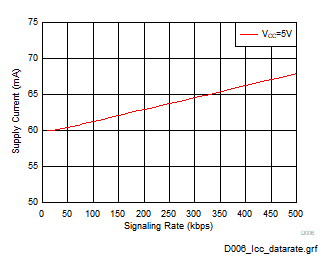
| RL = 54 Ω | TA = 25°C |
| RL = 54 Ω | CL = 50 pF |